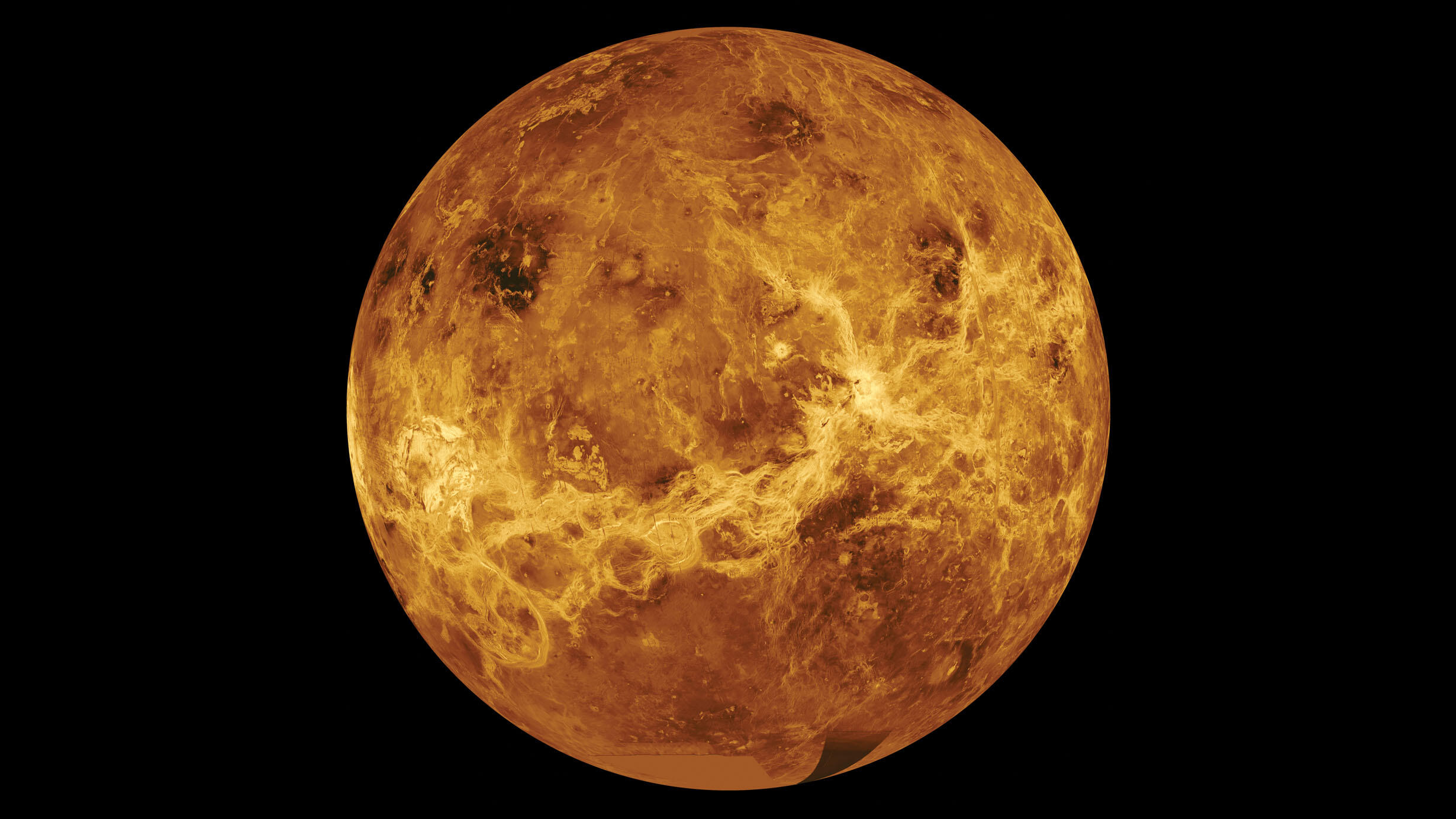 Even though Earth and Venus started out similarly, conditions on Venus couldn’t be more different than those on our blue planet.
Even though Earth and Venus started out similarly, conditions on Venus couldn’t be more different than those on our blue planet. NASA
Our planet Earth has a twin: Venus—which visitors can see in stunning high-resolution in the new Space Show Worlds Beyond Earth. The second planet from the Sun and our immediate neighbor has astoundingly similar qualities to our own world. It’s close in size and mass, with an internal iron core and silicate mantle and crust. Its dense atmosphere has active weather-like phenomena.
This world also once had conditions that were very similar to those of early Earth. For 2 to 3 billion years, an active volcanic surface carved out vast plains and a mountainous landscape. Average temperatures ranged between 68 and 122 degrees Fahrenheit, and there may have even been shallow seas filled with liquid water.
But around 700 million years ago, when multicellular life was flourishing on Earth, large amounts of carbon dioxide filled Venus’ atmosphere. Today, its punishing conditions are in stark contrast with those of our own blue-and-green Earth, with its perfect setting for hosting life. Why did these two worlds diverge? Well, there’s another invisible but vital difference between Venus and Earth—a magnetic field.
© AMNH
On Earth, the magnetic field created by our planet’s churning liquid iron core acts like a shield, deflecting solar wind particles. Venus, by comparison, rotates at an extremely slow rate, which is likely why it never formed a magnetic field. Without this powerful barrier against solar winds, its shallow seas dried up. With its water finally stripped away, the buildup of carbon dioxide in Venus’ atmosphere reached a point of no return, trapping solar energy as scorching heat. Temperatures soared to nearly 900 degrees Fahrenheit—hot enough to melt lead—and created thick, toxic clouds of sulfuric acid that move so furiously they circle the planet every five days.
See the new Space Show Worlds Beyond Earth, screening daily in the Hayden Planetarium Space Theater.
“Venus and Earth are almost identical in terms of composition, but their atmospheres have evolved differently,” says Denton Ebel, curator in the Museum’s Department of Earth and Planetary Sciences and curator of the new Hayden Planetarium Space Show Worlds Beyond Earth. “In addition to a magnetic field, Earth has microbial life which caused its atmosphere to become oxygenated over billions of years. Earth’s atmosphere can be compared to the skin of an apple: it’s very thin, but it’s everything to us.”
Venus’ carbon dioxide-choked atmosphere, on the other hand, offers a view of a greenhouse planet’s lonely fate.
A version of this story appeared in the Winter 2020 issue of the Member magazine, Rotunda.